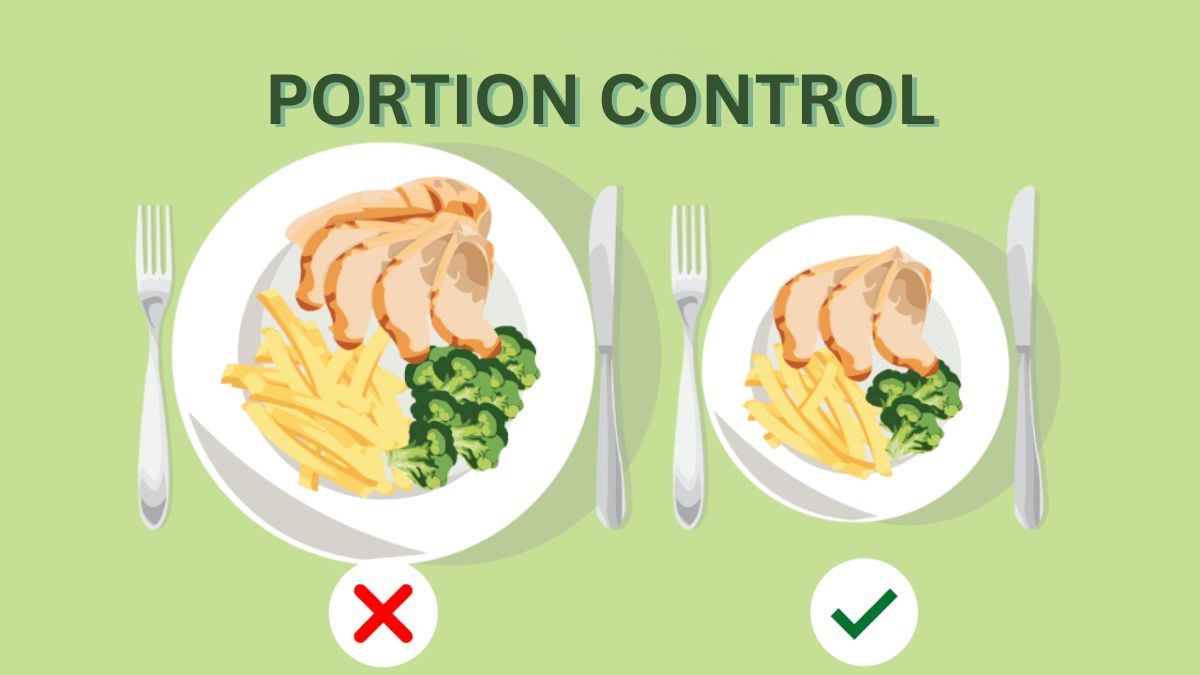Mastering Portion Control: Your Ultimate Guide to Cutting Down Calories
Mastering Portion Control: Your Ultimate Guide to Cutting Down Calories

Maintaining a healthy lifestyle can be challenging, especially when it comes to managing calorie intake. Portion control is a powerful tool that can help you cut down calories without sacrificing the joy of eating. By understanding how to manage your portions effectively, you can enjoy your favorite foods while still achieving your health and wellness goals.
Understanding Portion Control
Portion control refers to the practice of managing the amount of food you consume during meals. It is not merely about eating less; it’s about making smarter choices that make you feel satisfied while reducing your calorie intake. With the rise of oversized servings in restaurants and packaged foods, learning effective portion control techniques is more crucial than ever.
Why Portion Control Matters
- Prevents Overeating: By controlling portion sizes, you can avoid the common pitfall of overeating, especially with high-calorie foods.
- Promotes Mindful Eating: Focusing on portion sizes encourages you to eat slowly and savor each bite, enhancing your overall dining experience.
- Supports Weight Management: Effective portion control can help maintain a healthy weight by balancing calories consumed with calories burned.
Practical Tips for Effective Portion Control
- Use Smaller Plates and Bowls: This simple trick can make your portions look larger and help prevent overeating by tricking your brain into thinking you're consuming more food.
- Plan Your Meals: Preparing meals in advance not only helps with portion control but also ensures balanced nutrition throughout the week.
- Understand Serving Sizes: Familiarize yourself with standard serving sizes for different food groups. For instance:
- Protein: 1 palm-sized portion
- Carbohydrates: 1 fist-sized portion
- Vegetables: 2 fist-sized portions
- Pre-Portion Snacks: Instead of eating directly from the package, serve snacks in small bowls or containers to avoid mindless munching.
- Use Portion Control Tools: Consider using measuring cups, food scales, or even specialized portion control plates that visually guide you on how much to serve.
- Eat Slowly and Mindfully: Taking time to chew and savor your food allows your body to register fullness more effectively, reducing the likelihood of overeating.
- Stay Hydrated: Sometimes, thirst is mistaken for hunger. Drinking a glass of water before meals can help you feel fuller and reduce calorie intake.
- Track Your Food Intake: Keeping a food diary can help you stay accountable and recognize patterns in your eating habits that may lead to overeating.
- Fill Up on Low-Calorie Foods: Incorporate plenty of fruits and vegetables into your meals. They are low in calories but high in volume, helping you feel full without exceeding your calorie goals.
- Avoid Eating Out of Containers: When snacking, transfer a small amount into a bowl instead of eating straight from the bag or box to better control how much you're consuming.
- Practice the Hunger-Fullness Scale: Before reaching for seconds, assess your hunger levels. Wait at least 20 minutes after finishing your meal before deciding if you need more food.
- Be Cautious When Dining Out: Restaurant portions are often larger than necessary. Consider sharing dishes or asking for half portions when ordering.
By integrating these strategies into your daily routine, you can effectively manage portion sizes and cut down on calories without feeling deprived. Remember, successful portion control is about balance and making informed choices that align with your health goals.
In conclusion, mastering portion control is an essential step towards cutting down calories and achieving a healthier lifestyle. With practice and mindfulness, you can enjoy delicious meals while keeping your caloric intake in check. Start today by implementing these tips into your eating habits, and watch as you progress towards your health and wellness objectives!
